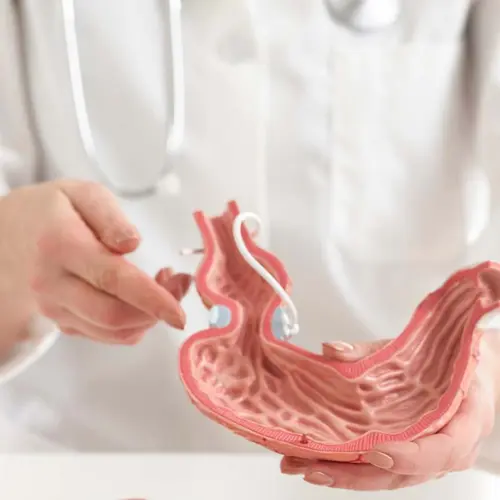Table of Contents
Erectile Dysfunction (ED) inhibits the ability to attain and sustain an erection suitable for sexual activity. An estimated one in 10 men will encounter ED at some point. It's imperative to grasp that ED often indicates an underlying issue. Contrary to misconceptions, ED isn't normal at any age and can be linked to problems like sexual desire, orgasm, and ejaculation. Approximately one in 10 adult males grapple with persistent ED.
About 10% of adult males endure chronic ED. While occasional erection failures can stem from stress, alcohol, or fatigue, consistent issues necessitate attention and treatment. Age shouldn't deter sexual satisfaction; even older men can still relish fulfilling erections. Seeking appropriate care can help manage ED and its underlying causes, enhancing overall well-being and quality of life.
In this article, we will mention what erectile dysfunction is and what causes erectile dysfunction. In the article, you can also find answers to questions, “What are the symptoms of erectile dysfunction?”, “How is erectile dysfunction treated?” and “What doctors treat erectile dysfunction?”
What Is Erectile Dysfunction (ED)?
Erectile Dysfunction (ED) entails the incapacity to achieve and sustain a firm erection suitable for sexual intercourse, impacting about one in 10 men during their lifetime. This condition transcends mere physicality, often unmasking underlying complexities. Notably, ED disregards age and can intertwine with broader issues that disrupt sexual fulfillment, encompassing diminished desire and challenges with orgasm and ejaculation.
The ubiquity of ED is striking, with roughly one in 10 adult males contending with persistent ED. While sporadic erection glitches can result from factors like stress, alcohol use, or fatigue, sustained difficulties signal the necessity for attention and potential treatment. Occasional failure to achieve an erection, less than 20% of the time, is routine and typically doesn't warrant intervention. However, a recurring problem, exceeding 50% of instances, underscores a deeper concern necessitating treatment.
Crucially, debunking the misconception that ED is an inescapable facet of aging is paramount. Even as older men might necessitate heightened stimulation, they can still attain satisfying erections and partake in gratifying sexual encounters.
What Causes Erectile Dysfunction (ED)?
Erectile Dysfunction (ED) is a complex condition rooted in various causes, as indicated by recent insights. Understanding these factors is crucial for effective management and treatment. ED arises from a multitude of sources, including:
Vascular disease: Blood supply hindrance due to atherosclerosis can impede penile blood flow.
Neurological disorders: Impaired nerve impulses from conditions like diabetes or stroke can impact erection mechanisms.
Psychological states: Stress, depression, and performance anxiety play a pivotal role in ED.
Trauma: Physical injuries may contribute to ED symptoms.
Chronic illness and medications: Certain ailments and drugs, such as for Peyronie's disease or cancer, can trigger ED.
Medications too can exacerbate ED. Prescription drugs intended to treat specific conditions can inadvertently affect hormones, nerves, or blood circulation. These side effects can lead to or worsen ED. It's vital to note common medications that list ED as a potential side effect, such as antihypertensives, antidepressants, and nonsteroidal anti-inflammatory drugs. Additionally, recreational substances like alcohol, cocaine, and marijuana, often abused, can not only suppress the central nervous system but also inflict permanent damage to blood vessels, causing long-term ED.
What Are the Symptoms of Erectile Dysfunction?
Erectile Dysfunction (ED) unveils itself through the inability to achieve and sustain an erection suitable for sexual activity. The signs of erectile dysfunction include:
Erection obstacles: Challenges in attaining or retaining a firm erection for satisfactory intercourse.
Diminished desire: Reduced interest in engaging in sexual activities.
Orgasm and ejaculation hurdles: Struggles with reaching orgasm or encountering delayed ejaculation.
These symptoms can trigger emotional distress, impacting self-esteem and relationships. While sporadic ED instances are normal, persistent symptoms demand professional assessment to explore tailored treatment options and receive the necessary support. Relying on the expertise of a healthcare provider becomes imperative for addressing ED's implications on both physical and emotional well-being.
How Is Erectile Dysfunction Treated?
There are different approaches to erectile dysfunction treatment.
It is important to face the challenges of erectile dysfunction (ED) and not stop fighting. There is no reason to doubt that this determination will bring success when you have effective solution methods at your disposal. Some of the treatments for erectile dysfunction can be lined up as below:
Erectile dysfunction drugs: The main element of the treatment is drugs that increase blood circulation to the penile region in a qualified way.
Vacuum pumps: Vacuum pumps offer an innovative option. These devices facilitate a firm erection by actively promoting blood flow to the penis.
Personalized guidance from experts: Getting personalized guidance from sex therapists can be in the person's best interest. These experts can provide advice that will enable people to discover new ways to regain their sexual health.
What Doctors Treat Erectile Dysfunction?
Addressing erectile dysfunction (ED) occurs according to a plan tailored to the underlying causes.
The appropriate medical professional depends on the root of the problem. Your doctor may prescribe oral medications. Where these are ineffective, solutions such as urologist vacuum devices or injections may be included in the plan.
Some of the treatment options for erectile dysfuçttion can be lined up as below:
Oral medications: Oral medications increase blood flow to the penis.
Sex therapy: Counseling can uncover the psychological factors that cause ED.
Surgical options: Implants can restore normal sexual function.




















